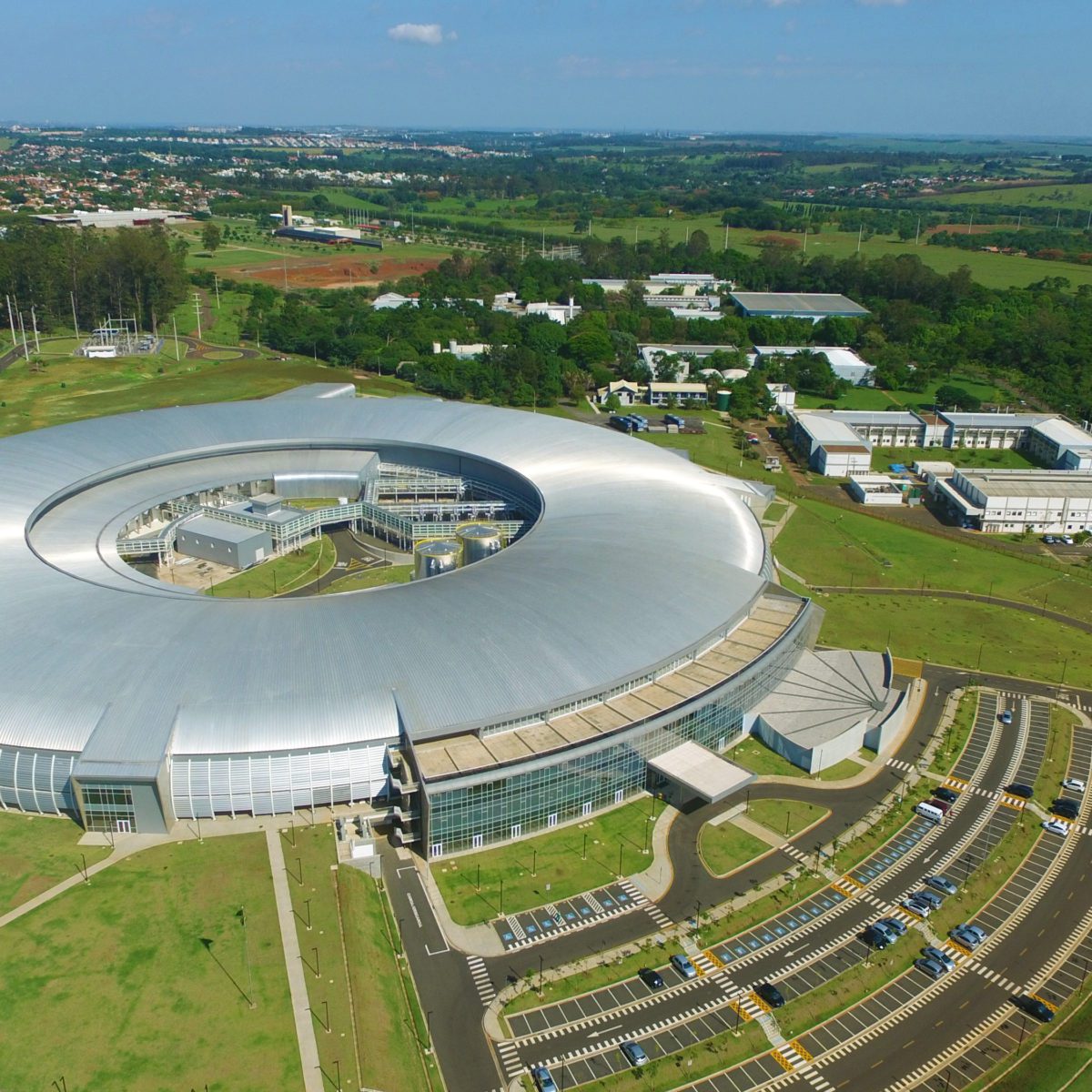
The new Brazilian synchrotron light source continues its successful commissioning
Last Saturday, December 14th, CNPEM’s team stored electrons in Sirius’s storage ring for several hours. This is a prerequisite for producing synchrotron light, and it happens only a few weeks after the first electron loop around the main accelerator was achieved. In addition, on Monday, December 16th, with the connection of the accelerator to one of the beamlines set up for testing, it was possible to receive the first X-ray pulse, still discrete due to the small number of circulating electrons.
The achievement came after an intense and thorough work of adjusting hundreds of equipment parameters, another very important milestone in the Sirius commissioning process. The team is now dedicated to achieving higher and higher currents needed to produce synchrotron light of enough intensity for the first scientific experiments.
Sirius is the largest and most complex scientific infrastructure ever built in Brazil and one of the first 4th generation synchrotron light source to be built in the world and it was designed to put Brazil at the forefront of this type of technology.
The next steps of the project include concluding the assembly of the first beamlines, which are the research stations where scientists conduct their experiments. These stations allow researchers to study the structure of virtually any organic and inorganic materials, such as proteins, viruses, rocks, plants, soil, alloys, among many others, in the atomic and molecular scale with very high resolution and speed.
Brazilian technology
The new Brazilian synchrotron light source Sirius is installed at the Brazilian Center for Energy and Materials Research (CNPEM), in Campinas, SP. Around 85% of the resources committed by the Brazilian Ministry of Science, Technology, Innovation and Communication (MCTIC) were invested in Brazil, in partnership with Brazilian companies. In addition to the construction works, contracts were signed with more than 300 small, medium and large companies, among which over 40 develop technological solutions specially for Sirius, in collaboration with CNPEM researchers and engineers.
Synchrotron light sources are the most sophisticated example of open and multidisciplinary research infrastructure and are a key tool for solving issues of importance to the Brazilian academic and industrial communities. The versatility of a synchrotron light source enables the development of research in strategic areas such as energy, food, environment, health, defense and many others.
This is one of the most important stages of the largest scientific project in Brazil
The new Brazilian fourth generation synchrotron light source will be open for researchers next year